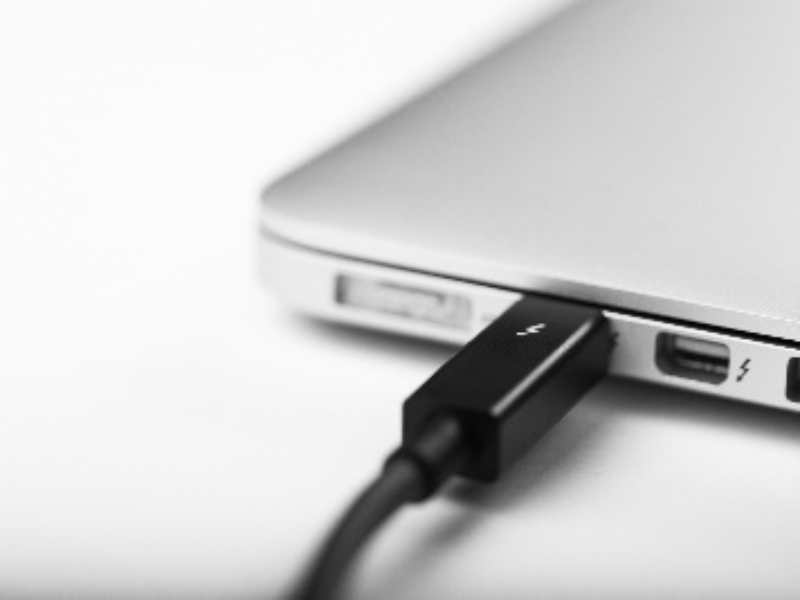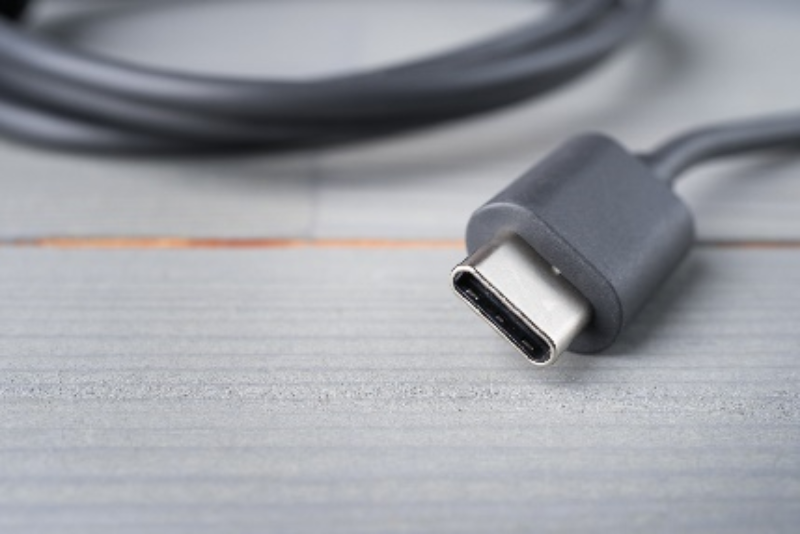USB4® vs. Thunderbolt™ 4 – technically, is there really any difference?
The Beginning Close up of a woman hand plugging an usb pendrive on a laptop at home Ever since its inception in 1996, the Universal Serial Bus (USB) has been a ubiquitous standard for connecting devices in the consumer space. Many of us don’t even remember computers without a USB…

The Beginning

Ever since its inception in 1996, the Universal Serial Bus (USB) has been a ubiquitous standard for connecting devices in the consumer space. Many of us don’t even remember computers without a USB port. Starting from a speed of 1.5 to 12 Mbit/s, the standard has continuously evolved over to USB 2.0 with 480 Mbit/s, various versions of USB 3.0 with up to 20 Gbit/s, and now USB4® with a whopping speed of 40 Gbit/s.
Besides the top speed and many other communication advantages, USB4 has done what none of the prior versions have. It has unified the connector to one form only: USB-C®. There will be no need for the nightmare of having different connectors for different devices. USB-C is one connector to rule them all.
The Transformation

Changes to the USB standard require a gargantuan effort by the entire ecosystem. Therefore, the pace at which USB evolved used to be slow. For this, and many other reasons, Intel and Apple collaborated to design a proprietary interface called Thunderbolt™. In 2011, Apple introduced systems with Thunderbolt ports capable of transmission of up to 10 Gbit/s, with the ability to daisy chain devices, the ability to multiplex various types of traffic into a single cable, and many other features. This interface was way ahead of its time, and all of the features introduced there can now be seen in the USB4 standard.
Originally, Thunderbolt was an Apple-only interface, but over the years other OEMs started embracing the interface as well. Unlike USB, an open standard, Thunderbolt is controlled by Intel, and the device certification is at Intel’s sole discretion.

With the advent of USB4, the difference to the equivalent Thunderbolt 4 technology has eroded to almost zero. The details of Thunderbolt 4 are proprietary, but according to Intel’s public statements the only real difference between the two standards is that the top speed of 40 Gbit/s is mandatory for Thunderbolt, whereas it is optional for USB4. Otherwise, all features are the same. This slight difference doesn’t exist in practice, as all non-Intel host platforms that I am aware of (and I think I am aware of most of them) either don’t support USB4, or they support a fully- featured USB4, which is equivalent to Thunderbolt 4.
The Future

So, what is the real difference between the two standards? USB4 is an open standard for which certification is done openly, and with the blessing of the USB-IF. For Thunderbolt, certification is done behind closed doors and only by Intel, or by Intel-enabled companies. The USB-IF cannot withhold USB4 certification if a manufacturer’s device passes a set of stringent pre-defined tests. For Thunderbolt, will Intel certify a competitor’s device that satisfies all of Thunderbolt’s requirements in a timely manner? I honestly don’t know.
The time is long gone in which Thunderbolt was technologically ahead of USB. The minor differences that are often highlighted are on paper only. There is practically no difference between a fully featured USB4 and Thunderbolt 4.
Companies will do well in breaking free of old shackles and embracing the open and democratic standard USB4.



